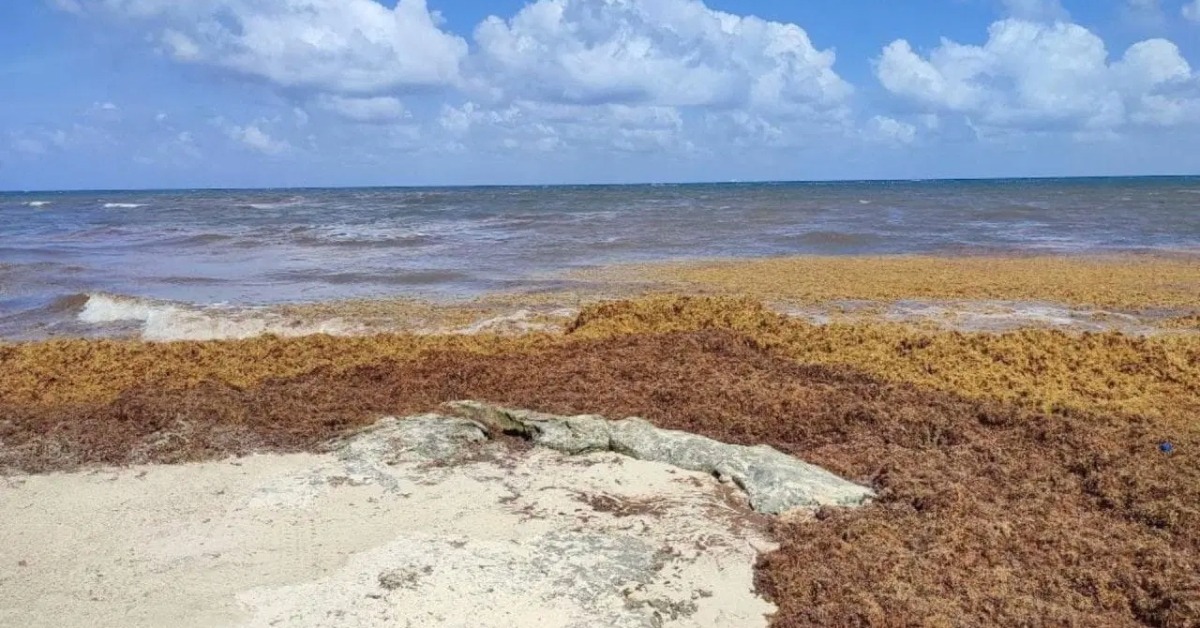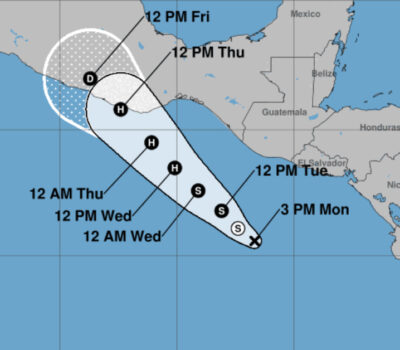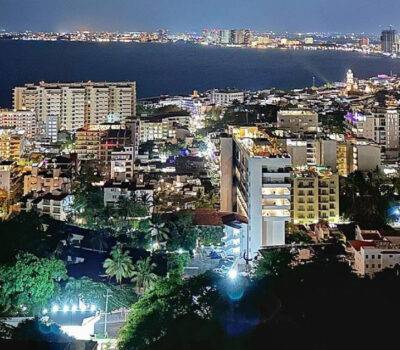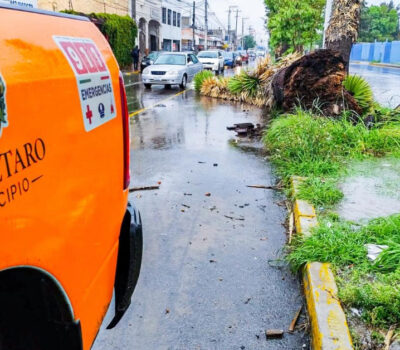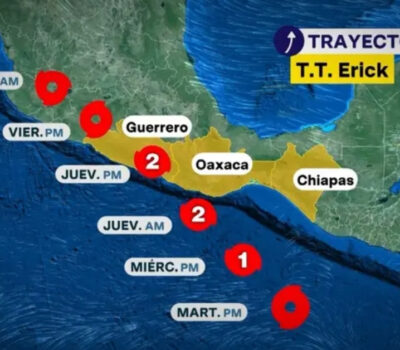A record volume of sargassum—over 37,000 tons—is floating in the Caribbean Sea, with 280 tons expected to reach Quintana Roo beaches. Experts warn of rising impacts on tourism, ecosystems, and public health.
The Mexican Navy reported over the weekend that an estimated 37,599 tons of sargassum is currently floating in the Caribbean Sea, prompting authorities to maintain the sargassum alert at level 5 (HIGH). This alert level is based on real-time data from satellite models, wind analysis, and photographic evidence of heavily impacted beaches across the Mexican Caribbean.
As a result, approximately 280 tons of the brown algae are expected to wash ashore in the coming hours. Specifically, forecasts predict that 65 tons will arrive along the coasts of Tulum, western Cozumel, Akumal, Puerto Aventuras, Playa del Carmen, and Puerto Morelos. Meanwhile, Mahahual is bracing for a more severe impact, with 215 tons likely to hit its coastline.
These projections mark a sharp increase from prior years. The National Autonomous University of Mexico (UNAM) has confirmed that the volume of sargassum expected to reach the Quintana Roo coastline this year will be more than 40% higher than previous seasonal averages.
Since the end of March, the Quintana Roo Sargassum Monitoring Network has identified a staggering 40 million metric tons of the algae floating across the Caribbean Sea. Alarmingly, at least 10% of this mass—about 4 million metric tons—has been detected approaching Mexican territorial waters.
Despite the alarming scale, ocean current models offer a slight reprieve. The Network estimates that as much as 90% of the encroaching sargassum could be carried away by the Yucatan Channel’s strong currents. Still, the remaining 10% poses a serious and immediate threat to popular beach destinations.
This localized data mirrors regional trends reported by international institutions. The University of South Florida’s Optical Oceanography Laboratory noted a 150% surge in the total volume of sargassum present in the Caribbean Sea, Gulf of Mexico, and western Atlantic in April compared to historical norms for the same month.
According to the Tourism and Society Think Tank, this seasonal invasion of sargassum is having widespread and growing consequences. Tourists are canceling reservations or avoiding affected beaches altogether, while local businesses—many of them reliant on beachgoers—struggle with the economic fallout. Beyond tourism, the algae’s overgrowth is severely disrupting coastal marine ecosystems.
UNAM has also warned of more insidious dangers. When sargassum piles up on beaches, it decomposes and dries in the sun, releasing toxic gases such as hydrogen sulfide and ammonia. These gases not only emit a foul odor but have been shown to impact both human and marine health. Over the past several years, residents and visitors alike have reported respiratory problems, nausea, and irritation caused by exposure to the fumes.
The phenomenon, once considered seasonal and manageable, is now prompting calls for long-term solutions. Experts agree that mitigation strategies must go beyond beach cleanup efforts. Proposals include offshore barriers, improved satellite monitoring, and coordinated regional policies among Caribbean nations.
With summer tourism in full swing, coastal towns in Quintana Roo find themselves once again on the front lines of a crisis that shows no signs of receding. While current data suggests that much of the sargassum may drift away from Mexican shores, the portion that does arrive will still bring ecological, economic, and public health challenges.
Local officials continue to urge residents and tourists to follow beach condition updates and avoid swimming in areas where sargassum has accumulated. Clean-up crews are on standby, and municipal governments are racing to minimize the damage. Still, the sheer scale of the algae bloom may overwhelm efforts.
As Quintana Roo grapples with yet another wave of sargassum, many are beginning to question whether this “new normal” will define future summers in the Mexican Caribbean.
A record volume of sargassum—over 37,000 tons—is floating in the Caribbean Sea, with 280 tons expected to reach Quintana . . .

